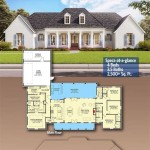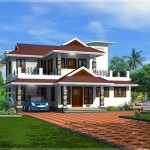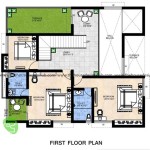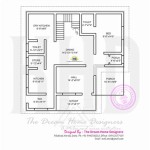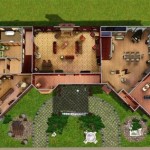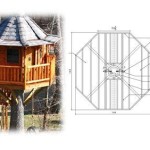Octagonal Home Plans: A Unique Approach to Residential Design
Octagonal home plans, while less common than traditional rectangular designs, offer a unique blend of architectural interest and functional advantages. These homes, based on the eight-sided octagon shape, present distinct characteristics that differentiate them from conventional house layouts.
One of the primary advantages of an octagonal design is its inherent structural strength. The symmetrical distribution of load bearing walls around the central core provides enhanced stability and resilience against wind and seismic activity. This inherent strength can potentially translate to lower construction costs in specific geographic locations prone to extreme weather conditions.
Octagonal homes maximize natural light penetration. With more exterior walls than a rectangular house of comparable size, opportunities for windows and other openings increase. This abundance of natural light can reduce reliance on artificial lighting, contributing to energy efficiency and creating a brighter, more inviting interior environment.
The unique geometry of octagonal floor plans allows for flexible and creative interior layouts. Rooms can be arranged around the central core, offering a more open and flowing floor plan compared to conventional designs. This layout often fosters a sense of spaciousness and connectivity between different living areas.
Consideration of airflow is crucial in octagonal house designs. The multiple exterior walls can create complex air circulation patterns. Proper ventilation planning, including strategically placed windows and potentially mechanical ventilation systems, is essential to ensure comfortable and healthy indoor air quality.
Heating and cooling efficiency can be a concern in octagonal homes. The increased exterior wall surface area, compared to a rectangular structure with the same floor space, can lead to greater heat loss in winter and heat gain in summer. Effective insulation and energy-efficient HVAC systems are crucial to maintaining comfortable indoor temperatures and minimizing energy consumption.
Aesthetically, octagonal houses offer a distinctive and visually appealing alternative to traditional designs. The unique shape can be enhanced with a variety of architectural styles, from classic Victorian to contemporary minimalist. Landscaping can also play a significant role in complementing the octagonal form and enhancing curb appeal.
Building an octagonal home presents specific construction challenges. The unconventional angles and geometry require careful planning and skilled craftsmanship. Standard building materials may need to be adapted or custom-fabricated to fit the octagonal structure, potentially impacting construction timelines and costs.
Finding suitable pre-designed octagonal house plans can be more challenging than finding traditional rectangular plans. However, custom design services can be employed to create a bespoke octagonal home that meets specific needs and preferences. Working with an architect experienced in octagonal design is highly recommended to ensure the final plan addresses the unique structural and functional considerations inherent in this type of architecture.
Roofing an octagonal house requires specialized expertise. The complex angles and intersections necessitate careful planning and execution to ensure proper waterproofing and structural integrity. Choosing the right roofing material and working with experienced roofing contractors is vital for a successful outcome.
Furnishing and decorating an octagonal home can also present unique challenges. The angled walls may require custom-built furniture or creative placement of standard pieces to maximize space utilization and create a cohesive interior design. Careful consideration of furniture layout is essential to avoid awkward spaces and enhance the flow of the rooms.
When evaluating octagonal home plans, it's important to consider the potential resale value. While the unique design can be appealing to some buyers, it may not resonate with everyone. Local market preferences and the overall housing market can influence the resale potential of an octagonal home.
Despite the potential challenges, octagonal homes offer a compelling alternative to traditional residential architecture. Their inherent structural strength, opportunities for natural light, and flexible floor plans make them an attractive option for those seeking a unique and functional living space. Careful planning, collaboration with experienced professionals, and a thorough understanding of the specific considerations associated with octagonal design are key to a successful project.
Accessibility in octagonal homes requires careful consideration during the design phase. The arrangement of rooms and hallways needs to accommodate individuals with mobility challenges, ensuring ease of movement and access to all areas of the house. Incorporating universal design principles can enhance accessibility and create a more inclusive living environment.
Privacy considerations are also relevant in octagonal homes, particularly with the increased number of exterior walls and windows. Strategic placement of windows, landscaping, and window treatments can help maintain privacy while still maximizing natural light penetration.

Unique Octagonal Modern Style House Plan 8652

The Octagon 1371 3 Bedrooms And 2 5 Baths House Designers

Octagon House Floor Plans Cottage

Featured House Plan Bhg 1400

Gunnison Octagonal House Floor Plan History Grand Rapids

Topsider S Octagon Houses And Octagonal Home Designs

Octagonal Cottage Home Plan 42262wm Architectural Designs House Plans

Design For An Octagonal House Two Alternative Ground Plans And A Bedroom Floor Riba Pix

Octagon House Plans Designs Design Vacation Round

Octagon House Free Design 3d Ideas Joy Suiter By Planner 5d

